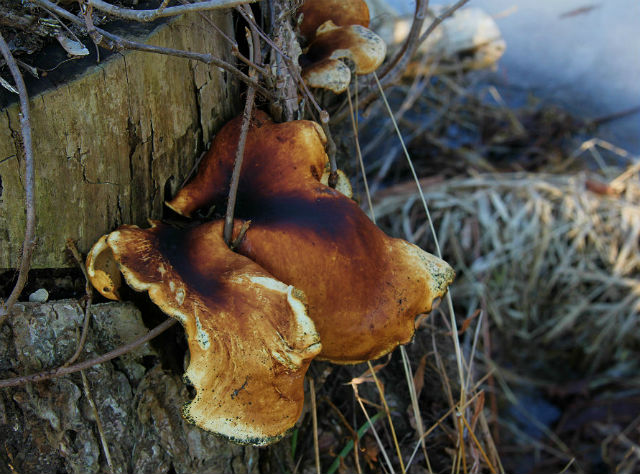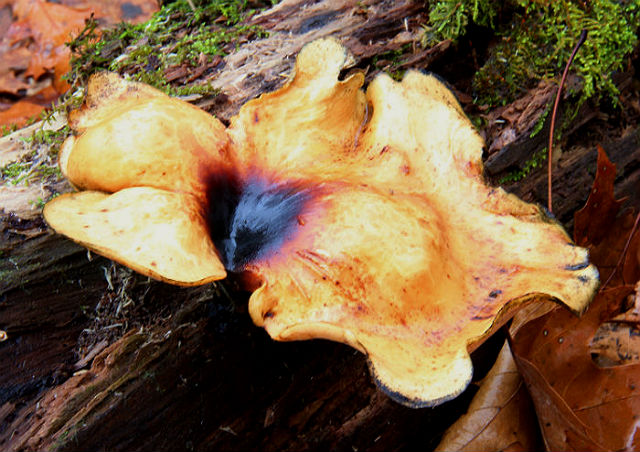The Black-Footed Polypore has a smooth, wavy cap that is often sunken in the center. Its off-center stalk is black near the base. It can grow singly or in groups on dead wood and stumps of trees. Although it is typically seen in Autumn, it has the ability to overwinter.
This species lives within rotting logs as a whitish network of cells that digests and decomposes the dead wood. When ready to reproduce, mushrooms develop and emerge from the log. Not only is its appearance distinct, sometimes convex and sometimes funnel-shaped, but it is rather large – about 8 inches across.
This is one of the many fungus species that live on decaying wood. It and other related fungi play an incredibly important role in breaking down the tough materials wood is made of and returning those nutrients to the soil.
Mushrooms decorate woodlands the way wildflowers do, adding to our enjoyment of hikes. Many mushrooms are most prominent in the Fall, when wildflowers are winding down. Mushrooms that overwinter are an especially welcome sight on a February day like today.




